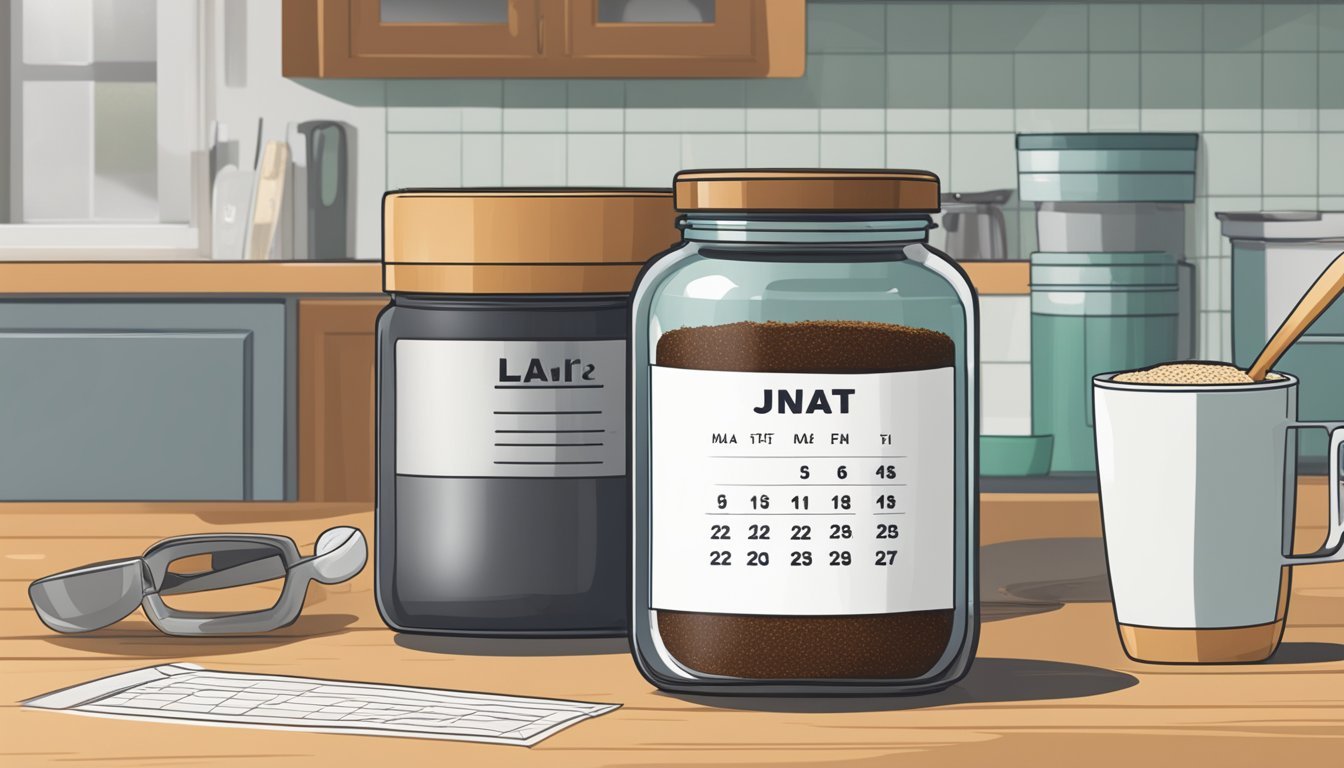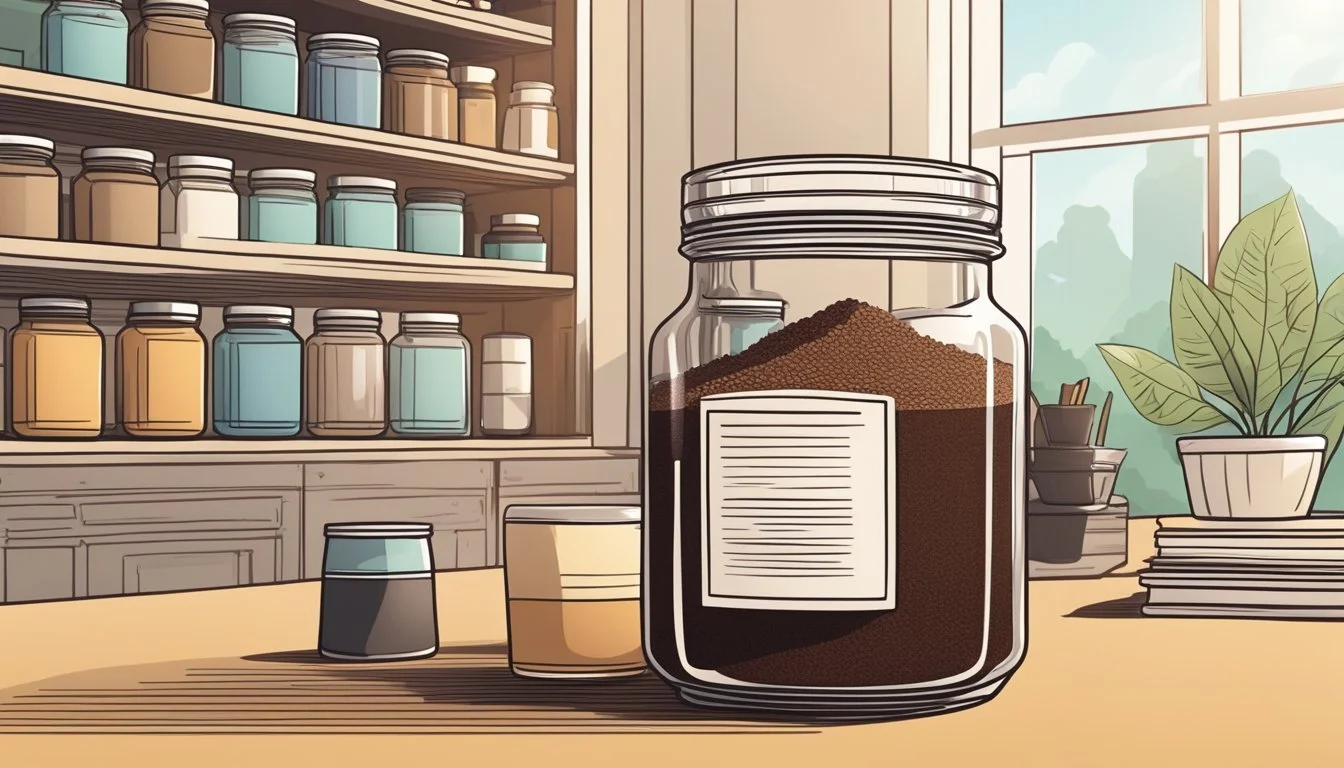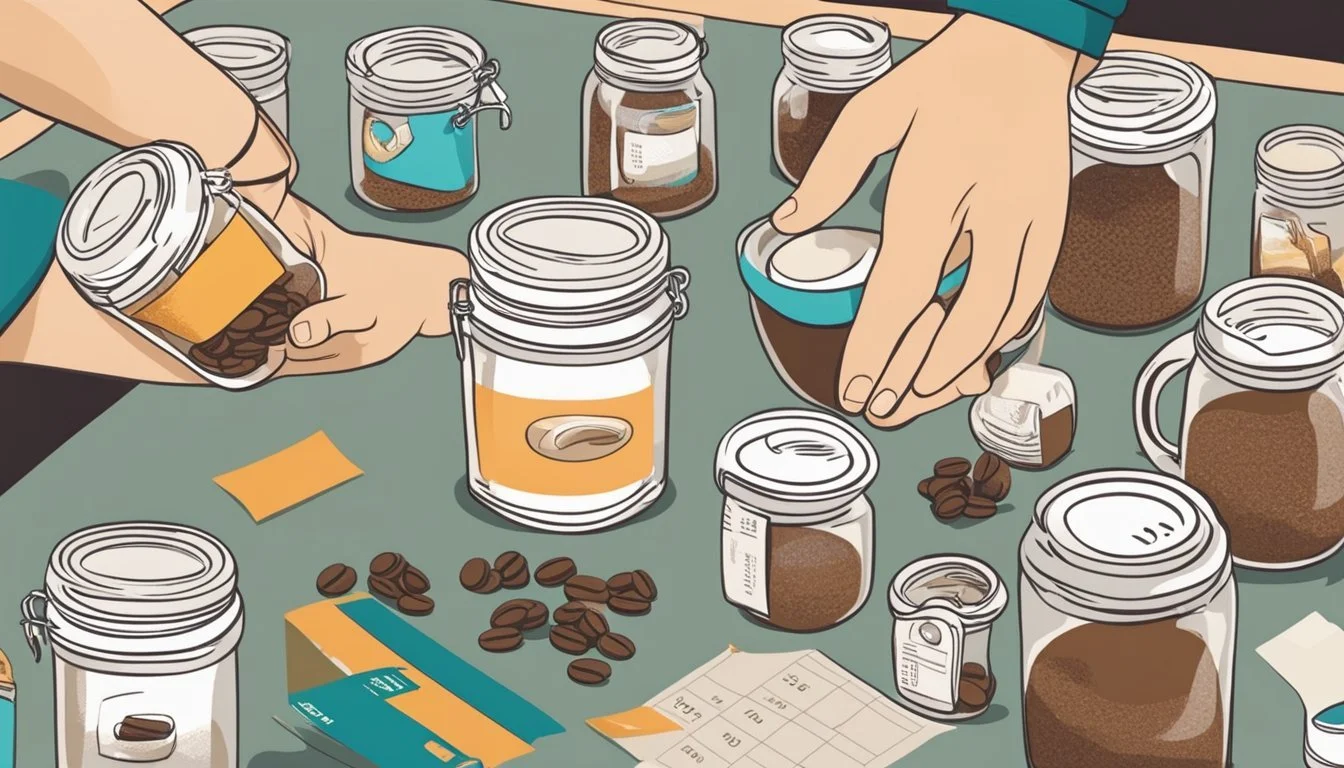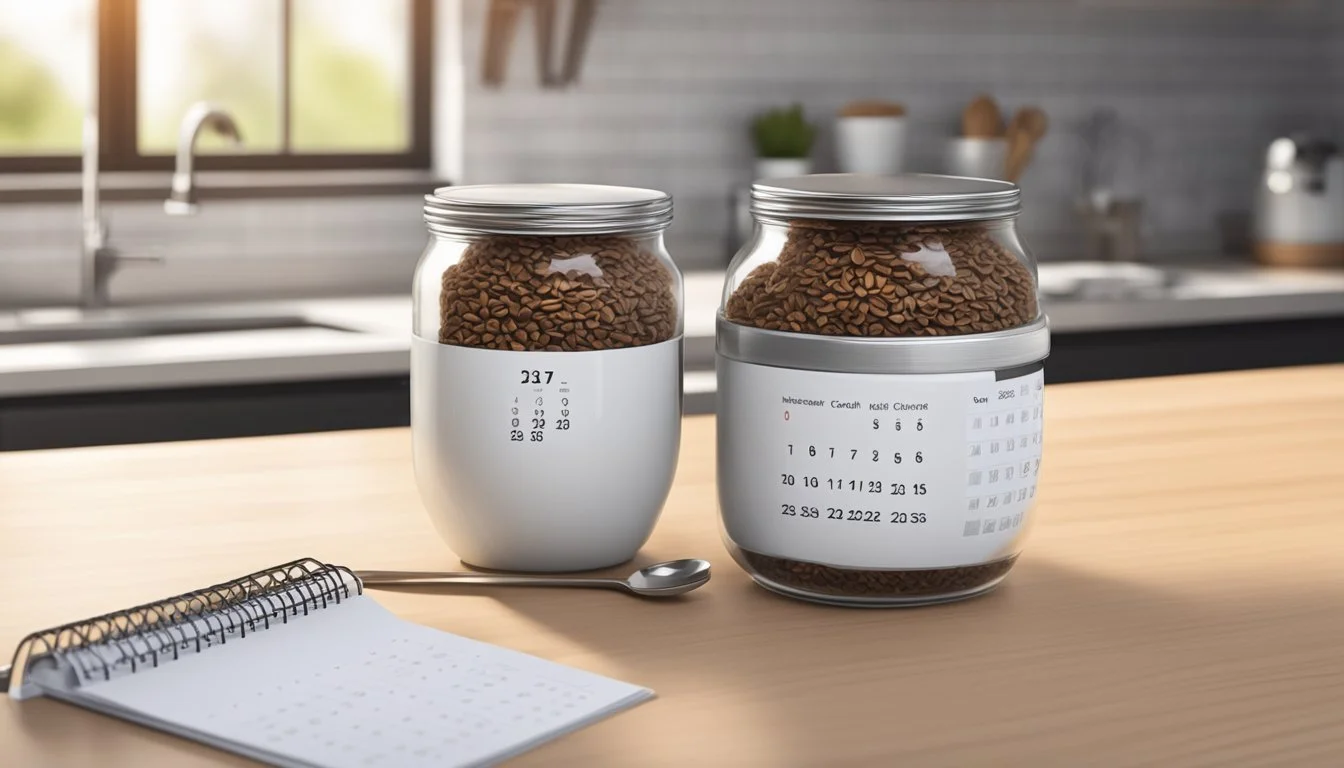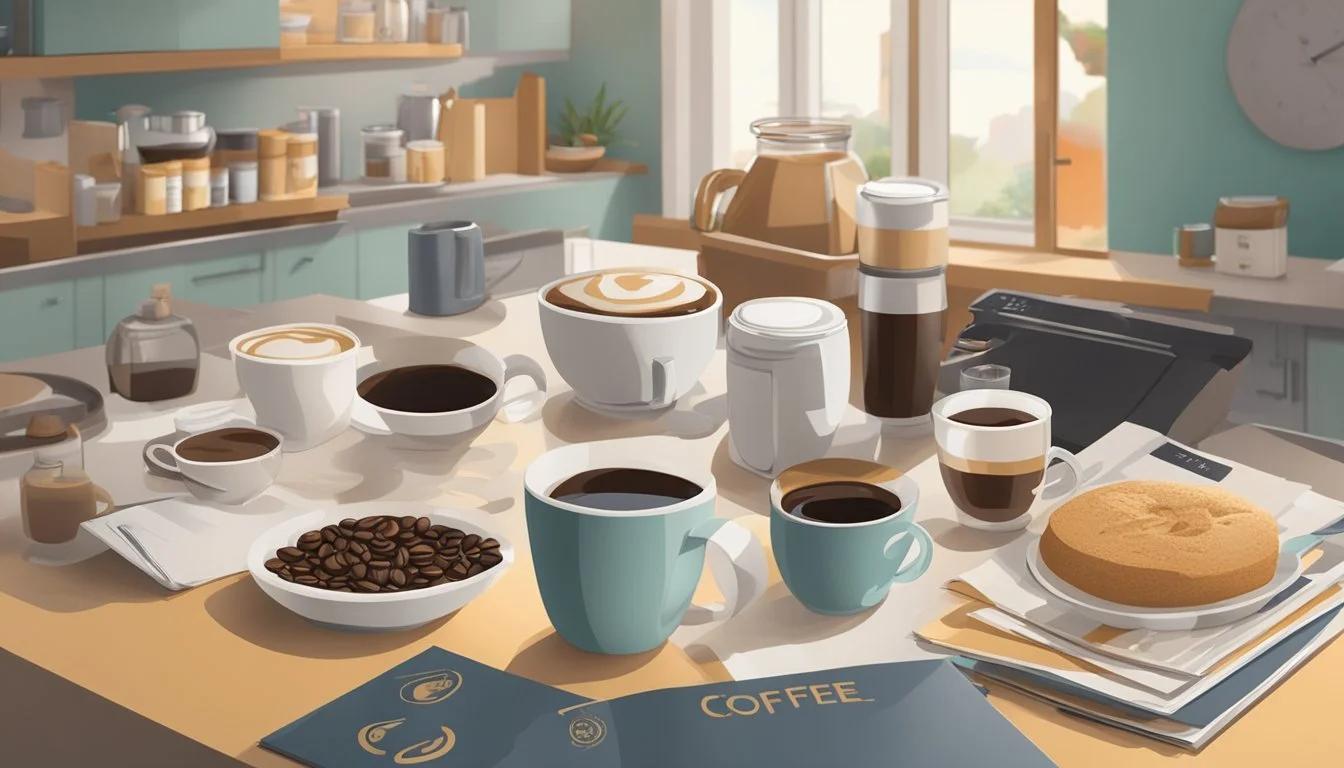How Long Does Instant Coffee Last?
Shelf Life and Storage Tips
Instant coffee is a staple in many households for its convenience and longevity. Unlike its freshly ground counterpart, instant coffee boasts a significant shelf life, which comes from its unique manufacturing process. The coffee is brewed, concentrated, and then dried to create a product that reactivates once hot water is added. This process not only provides ease of use but also contributes to its extended shelf life, making it a go-to for those who want a quick caffeine fix without worrying about rapid spoilage.
The longevity of instant coffee, however, doesn't imply that its quality remains constant indefinitely. Over time, even sealed instant coffee can experience a decline in flavor and aroma, which are integral to the coffee-drinking experience. The taste, a critical aspect for coffee enthusiasts, may diminish as the product ages, even though it remains safe to consume. Proper storage is essential to maintaining the quality of instant coffee; keeping it in a dry, airtight container away from light and heat can help preserve its desirable qualities for an extended period.
Understanding Instant Coffee
Instant coffee, known for its convenience, is a soluble coffee product made from brewed coffee beans (how long do coffee beans last?) that allows consumers to quickly prepare a coffee drink by simply adding hot water. This section dives into its composition, varieties, and how it stands in comparison to ground and roasted coffee.
Composition and Types
Instant coffee is primarily made from roasted and ground coffee beans that undergo a drying process—either freeze-drying or spray drying—to become soluble granules or powder. It typically includes varying amounts of caffeine depending on the type and brand, and retains some of the antioxidants found in regular coffee.
The various types of instant coffee can include:
Regular: Standard coffee with no added flavors or ingredients.
Decaffeinated: Coffee from which most of the caffeine content has been removed.
Flavored: Coffee that includes additional flavorings such as vanilla, caramel, or hazelnut.
Comparison with Ground and Roasted Coffee
Instant coffee and ground coffee share the same origin, both stemming from roasted coffee beans. However, they differ significantly in terms of preparation, taste, and freshness.
Preparation: Instant coffee dissolves in water, bypassing the need for brewing, unlike ground coffee which requires filtering.
Taste: The drying process for instant coffee can lead to a loss of some flavor components, resulting in a taste that might be less complex than freshly brewed coffee from roasted grounds.
Freshness: Ground and roasted coffee's shelf life is typically shorter than that of instant coffee due to the latter's lower moisture content and stable dry form.
In summary, while instant coffee provides a quick caffeine fix with decent shelf stability, it may not match the fresh taste and aromatic experience offered by ground and roasted coffee beans.
Factors Affecting Shelf Life
Instant coffee's longevity is influenced by several key environmental variables. Understanding these can maximize its shelf life, keeping the coffee fresher longer.
Moisture and Humidity
Moisture and humidity are critical factors in the storage of instant coffee. Humidity can degrade the product as it encourages clumping and mold growth. To keep coffee dry, one should ensure it is stored in a dark and dry place. The use of silica gel packets or oxygen absorbers can help to manage moisture levels.
Temperature and Sunlight
The longevity of instant coffee is also affected by temperature and sunlight. Prolonged exposure to high temperatures or direct sunlight can degrade the quality of the coffee by altering its taste and aroma compounds. It is advantageous to store instant coffee in a cool environment, away from sources of heat and light.
Oxygen and Airtight Containers
Exposure to oxygen can cause instant coffee to oxidize, leading to a stale or rancid flavor. The use of airtight containers is essential to minimize oxygen's impact. Containers with good seals prevent air exposure and maintain the product's quality over time.
Packaging Material and Quality
The packaging material and quality directly impact the shelf life of instant coffee. Packaging that is impermeable to air and moisture is ideal. High-quality materials with protective inner linings can help in preserving coffee's freshness, especially if they block out light.
Storage Guidelines
The longevity and freshness of instant coffee greatly depend on its storage conditions. Proper storage helps maintain its flavor and prevents spoilage, ensuring that coffee enthusiasts can enjoy their instant brew for an extended period.
Proper Storage Locations
One should store instant coffee in a dry, cool place far from direct sunlight, such as a pantry or a cupboard. An ideal storage location should have a consistent temperature and be devoid of excessive heat and light, which can degrade the quality of coffee over time.
Freezer Versus Pantry
Pantry: Storing instant coffee at room temperature in a pantry is sufficient for maintaining its quality if used within its best-by date. However, for longer storage beyond this date, one might consider alternative methods.
Freezer: The freezer can be a good option for extending the shelf life of unopened instant coffee packages, but one should ensure that the coffee is in an airtight container to prevent moisture content, which can lead to spoilage. This method is not typically recommended for daily-use coffee due to the condensation that can occur with frequent temperature changes.
Sealed Versus Opened Packages
Sealed Packages: An unopened package of instant coffee can retain freshness for up to 20 years when stored correctly. This is because the sealed packaging prevents exposure to air and moisture, which are primary factors in coffee degradation.
Opened Packages: Once opened, it's important to transfer the instant coffee to an airtight container, such as a mason jar with a tight seal. Keeping it in a fridge can help prevent spoilage, but it isn't necessary if the coffee is stored properly in a pantry. Opened instant coffee should be used within 12-18 months to enjoy its optimal flavor.
Detecting Spoilage
When it comes to instant coffee, understanding spoilage hinges on discerning changes in visual appearance, aroma, and the presence of mold and bacteria. To ensure the coffee remains safe and enjoyable, one should be vigilant about these indicators.
Visual and Aromatic Indicators
Instant coffee that is spoiling may exhibit distinct discoloration or clumping. These visual cues can signal a loss in quality. The aroma of instant coffee is a strong indicator of its freshness. If the coffee emits a bland or altered smell, this usually means it has begun to go bad. Spoiled coffee might lose the robust, inviting scent it's known for, taking on a stale or unpleasant odor instead.
Signs of Mold and Bacteria
Mold Growth: Presence of mold, usually appearing as fuzzy spots of various colors, clearly indicates spoilage.
Bacteria: While not always visible, a sour or off smell can suggest bacterial growth. It is not safe to consume instant coffee with signs of either mold or bacterial contamination.
Health and Safety Concerns
When it comes to instant coffee, health and safety are paramount. Consumers should be aware of the potential risks associated with expired instant coffee and adhere to FDA guidelines to ensure their coffee consumption is safe.
Risks of Expired Instant Coffee
Expired instant coffee, although not known for harboring dangerous bacteria that can cause foodborne illnesses, may lose its flavor and potency over time. However, one should consider the following:
Taste Deterioration: The quality of coffee flavor significantly declines past the 'Best Before' date.
Decreased Potency: The efficacy of the caffeine content may be reduced in expired instant coffee.
FDA Regulations and Recommendations
The U.S. Food and Drug Administration (FDA) does not require expiration dates on instant coffee, but they do provide guidance on food labeling:
'Best Before' Dates: These are indicated to ensure optimal quality as decided by the manufacturer.
Proper Storage: Instant coffee should be stored in a cool, dry place to prolong its shelf life.
The key is to use sensory cues – if the coffee smells stale or has an off taste, it's best to discard it even if it may not pose a health risk.
Longevity and Freshness Tips
To maintain the freshness and extend the shelf life of instant coffee, one must consider proper storage methods, the use of oxygen absorbers, and best-use practices. Implementing these tips can help ensure that instant coffee retains its best taste and quality up to and possibly beyond its expiration date.
Extending Instant Coffee's Lifespan
Instant coffee typically has a long shelf life, but to maximize its duration, it should be stored in a cool, dry place away from direct sunlight and heat sources. Once opened, transferring the coffee to an airtight container can keep it fresh for months. It is crucial to use a dry spoon when measuring out coffee to avoid introducing moisture, which can lead to mold and a loss of flavor.
Using Oxygen Absorbers and Proper Sealing
Oxygen is one of the main enemies of instant coffee's freshness. Introducing oxygen absorbers into the storage container can significantly extend the coffee's life by preventing oxidation. In addition, sealing the coffee in an airtight container or using vacuum-sealed bags will minimize exposure to air.
Proper Sealing Technique:
Ensure the container's rim is free from coffee granules.
Use containers with strong seals.
Check the seal each time after closing.
Best-Use Practices for Optimal Taste
For the best flavor experience, it is recommended to consume instant coffee before the best by or expiry date. However, if the coffee smells fine and there are no signs of spoilage, it can still be used past these dates, although the taste may diminish over time. Always use a dry spoon to keep the remainder of the coffee dry, and close the lid as soon as possible after use to limit the coffee's contact with air and moisture.
Practical Aspects of Usage
As consumers evaluate the longevity of instant coffee, understanding the practical aspects of its usage is imperative. This includes comparing different brewing methods and exploring alternative utilizations beyond the traditional brewing process.
Brewing Methods Compared
Instant coffee offers diverse brewing options tailored to the user’s preference and convenience. Single-serve packets and coffee pods cater to those seeking a quick cup with minimal effort—simply add hot water or use a compatible coffee machine. In contrast, brewing a more customized beverage, such as an espresso or adding creamer, may require more attention to the ratio of coffee to the added ingredients to achieve the desired strength and flavor. One can note:
Brewed Coffee: Requires a coffee maker but allows for more control over strength and taste.
Instant Single-Serve Packets: Just add hot water; strength is predefined.
Coffee Pods: Require specific machines; offer a broader variety of flavors including tea and hot chocolate.
While brewed coffee provides a rich flavor, it lacks the energy efficiency and convenience of instant varieties, which can be particularly appealing for those with a busy lifestyle.
Creative Uses Beyond Brewing
When coffee is seen beyond just a hot beverage, its utility magnifies. Instant coffee can be repurposed into:
Ice Cube Trays: Mixed with water and frozen, it can be added to milk or used in cold brew concoctions.
Cooking and Baking: Adds a depth of flavor to recipes such as chocolate cakes, brownies, or even homemade coffee creamers.
Different forms of instant coffee, such as powder or granules, are versatile and can be stored and used in innovative ways, providing more than just a quick caffeine fix.
Brands and Variations
When exploring the longevity and quality of instant coffee, it is essential to consider the specific brands and the variety of flavor profiles available. The shelf life and taste can vary significantly among brands and the various flavor options they provide.
Popular Instant Coffee Brands
Nescafé and Starbucks are two of the leading brands in the instant coffee market. They offer a range of products with varying shelf lives, typically indicating a "Best Before" rather than an expiration date. Most brands, including these two, set the shelf life of their instant coffee to 1 to 2 years. However, the actual quality may begin to deteriorate after this period, potentially leading to a stale coffee taste that deviates from the fresh, vibrant flavors expected from these premium brands.
Nescafé: Known for its wide assortment, from rich, dark roasts to smooth, mild versions.
Starbucks: Offers signature blends available in instant form, echoing the flavors found in their café brews.
Flavor Profiles and Choices
The flavor profiles of instant coffee from brands like Nescafé and Starbucks cater to a diverse palate. Although the primary concern for consumers might be how stale instant coffee could affect the taste, one should note that flavor quality can remain intact if the coffee is stored properly.
Flavor options from these brands may include:
Classic: A standard, balanced brew.
French Vanilla: A sweet and creamy flavored option.
Italian Roast: A bold and robust selection.
Colombian: Smooth with a slight acidity often preferred by those who enjoy a lighter taste.
Proper storage is crucial to maintain the quality and flavor of instant coffee, and options may deteriorate if exposed to moisture or stored improperly. An airtight container is recommended to prolong the shelf life and prevent the coffee from becoming stale.
Decoding Expiration and Manufacture Dates
When assessing the longevity of instant coffee, it's important to understand the terminology used on packaging, which includes both 'Best By' and actual 'Expiration' dates, as well as to consider the manufacturer's guidelines for product shelf life.
Interpreting 'Best By' Versus 'Expiration'
'Best By' dates are often found on instant coffee packages and indicate the timeframe in which the product is expected to maintain optimal quality and flavor. This is not an expiration date; instant coffee can still be safe to consume after this date but may not offer the same taste experience.
'Expiration' or expiry dates are less common on non-perishable items like instant coffee. They suggest a date after which the manufacturer cannot guarantee the product's safety or quality. However, it's important to note that instant coffee generally has a long shelf life and may still be safe past this marker if stored properly.
Manufacturer's Guidelines
Manufacturers provide guidelines on packaging to ensure consumers experience the product as intended. These recommendations include:
Storage conditions: To extend the product's shelf life and maintain quality, manufacturers suggest specific storage conditions, like a cool and dry place away from sunlight and moisture, which can degrade the product's quality even before the 'Best By' date.
Shelf life post-opening: While unopened instant coffee may last several years, once opened, exposure to air and moisture can impact its shelf life. Manufacturers typically recommend consuming it within a specified period for best quality.
Manufacturers also suggest that, while instant coffee may be safe to consume after the 'Best By' date, there might be a noticeable change in flavor or intensity, even though this does not necessarily equate to the product being expired or unsafe.


